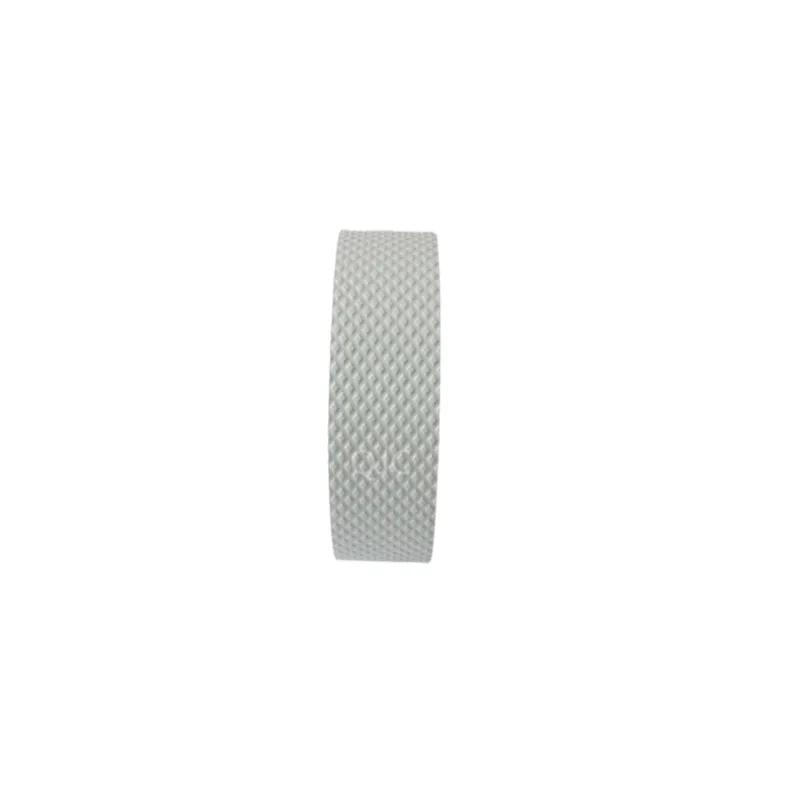Understanding Self-Amalgamating Tape A Versatile Solution for Electrical and Mechanical Applications
Self-amalgamating tape, often referred to as self-fusing or self-adhesive tape, is a remarkable innovation in the world of materials. This tape is commonly used in various applications, notably in electrical insulation and mechanical repairs. With a width of 50mm, it offers a convenient size for covering a range of surfaces effectively.
What is Self-Amalgamating Tape?
Self-amalgamating tape is made from a type of rubber-based compound that fuses to itself when wrapped around a surface. Unlike conventional adhesive tapes, this type does not stick to surfaces through a sticky backing; instead, it forms a solid bond through the process of amalgamation. This feature allows it to create a waterproof seal and provides excellent insulation properties, making it ideal for electrical applications.
Key Features and Benefits
1. Waterproof and Weatherproof One of the standout characteristics of self-amalgamating tape is its ability to withstand harsh environmental conditions. It is resistant to water, oil, and UV rays, which extends its usability in outdoor applications. This resistance is crucial for protecting electrical connections and components in various weather scenarios.
2. High Insulation Resistance The tape offers excellent electrical insulation, making it suitable for repairing damaged cables and wires. The 50mm width provides ample coverage, allowing for effective insulation of larger connections.
3. Temperature Resistance Self-amalgamating tape is designed to withstand extreme temperatures, typically ranging from -40°C to +90°C (-40°F to +194°F). This feature ensures its reliability in both cold and hot climates, making it a preferred choice for industrial applications.
4. Easy Application The tape is straightforward to apply; it requires no additional adhesives or curing agents. Simply stretch and wrap the tape around the surface you want to cover, and it will fuse upon contact. This ease of use saves both time and effort, especially in emergency situations.
self amalgamating tape 50mm

5. Durability Once applied, self-amalgamating tape creates a flexible, strong, and durable seal that can endure stretching and compression. This durability makes it an excellent choice for mechanical repairs, such as sealing hoses or protecting surfaces from wear and tear.
Applications
Self-amalgamating tape finds its way into numerous applications across different industries
- Electrical Repairs Its primary use is in repairing and insulating electrical wires and connections. The tape not only protects against moisture but also against short circuits and electrical failures.
- Automotive Industry Mechanics and automotive engineers use self-amalgamating tape for sealing hoses, wiring harnesses, and repairing damaged insulation.
- Plumbing It can also be employed in plumbing applications to seal leaks in pipes and fittings, creating a reliable barrier against water ingress.
- General Repairs From sports equipment to household items, self-amalgamating tape serves as a handy tool for quick repairs, reinforcing weak points, and providing support where needed.
Conclusion
In conclusion, self-amalgamating tape, particularly in a 50mm width, is an invaluable tool for a range of applications. Its unique properties—self-fusing nature, durability, waterproof characteristics, and ease of application—make it a preferred choice for professionals and DIY enthusiasts alike. Whether used in electrical work, automotive repairs, or for other mechanical purposes, self-amalgamating tape provides an effective solution that stands the test of time and conditions. With continuous advancements in materials technology, we can expect even more innovative uses and improvements in self-amalgamating tape, further solidifying its place in both industrial and everyday applications. As we continue to explore and utilize the benefits of this tape, its role in enhancing safety and reliability across various fields will undoubtedly expand.
-
XIANGFAN Rubber Tape-Ultimate Solutions for All Your Insulation NeedsNewsJun.24,2025
-
XIANGFAN Rubber Tape-Protection for Industrial and Residential ApplicationsNewsJun.24,2025
-
XIANGFAN Rubber Tape: Superior Safety and Sealing for Demanding EnvironmentsNewsJun.24,2025
-
XIANGFAN Rubber Tape: Reliable Solutions for Every Electrical ChallengeNewsJun.24,2025
-
XIANGFAN Electrical & Industrial Tape: Powering Reliability Across IndustriesNewsJun.24,2025
-
XIANGFAN Electrical & Industrial Tape: Excellence in Every ApplicationNewsJun.24,2025
